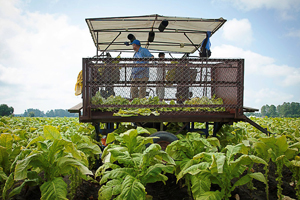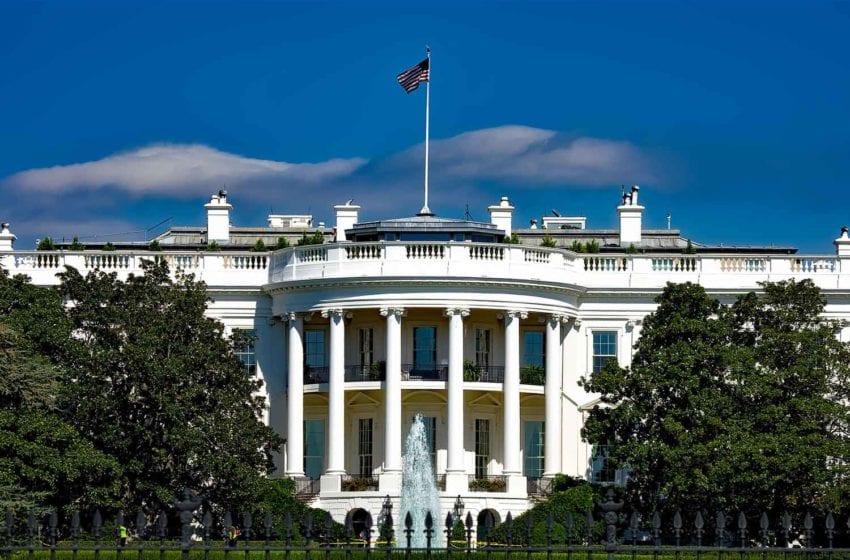Originally created as a last-resort buyer, U.S. Tobacco Cooperative now markets some of the world’s best and most sustainably produced tobaccos.
TR Staff Report
U.S. Tobacco Cooperative (USTC) is undergoing a radical transformation. Comprising more than 850 member growers throughout North Carolina, South Carolina, Virginia, Georgia and Florida, the grower-owned marketing cooperative has a history that dates back to the 1940s. Since the end of the federal tobacco program more than a decade ago, the company has been undergoing a restructuring process in line with changing market dynamics. Today’s USTC is a modern leaf supplier that is positioned to meet the increasingly demanding requirements of its domestic and export customer base and to give its growers a sustainable platform from which they can operate into the future.
Before it was terminated in 2004, the federal tobacco program played an integral role in protecting many U.S. tobacco growers’ livelihoods. Not only did it help to stabilize the quantity and price of flue-cured tobacco, but it also provided a safety net for farmers should the crops contain less-than-desirable characteristics. USTC was able to help its members by administering that program. Now that the program has ended, the organization still serves the same purpose of supporting farmers, but it has evolved in response to the significant changes in the U.S. market, driving the standards upon which the system operates to better meet the quality and compliance demands of the market.
“One of the biggest changes for USTC was that, when we were buying tobacco under the federal tobacco program, we were buying tobacco that was excess to market demand. Most growers didn’t start their year with the goal of selling to Stabilization; it was the port of last resort,” says Stuart Thompson, CEO of USTC. “But today, as a stand-alone, bona fide leaf supplier, our members are largely the best growers in the U.S. We have the ability to buy the very best tobacco and service the needs of a much broader customer base. We’ve really done a complete ‘180’ in terms of the growers who contract with us, now becoming their first choice, and also in terms of the quality and styles that we’re purchasing.”
Recognizing the opportunity to adapt the existing business model to one that produced and sold quality tobacco grown by some of the most sophisticated and efficient commercial tobacco farmers in the world, USTC has taken a number of steps designed to strategically position the company within the constantly evolving tobacco industry.
“During the transition from the federal tobacco program, we started contracting directly with growers,” says Thompson. “This was the first and most important step to ensuring that we had access to the styles of tobacco our customers wanted. We also recognized that, once we bought the tobacco, we were still going to have to process it. In order to keep our business and growers viable, we had to sell the packed product at a reasonable profit. We acquired the plant in Timberlake, North Carolina, so we had our own processing facility. Once we had secured our ‘independence,’ we were well-positioned to pursue our core mission of being a cooperative, now without federal support.”
Contracts connected to performance
With the beginning of the 2005 crop year, and the end of the quota and price support system, a new marketing system for U.S. flue-cured tobacco began to emerge. While farmers celebrated the end of quotas that limited the number of pounds of tobacco they were permitted to plant, buyers around the world looked forward to lower prices for U.S. flue-cured tobacco, widely considered to be the highest quality in the world.
USTC wanted to improve opportunities for its cooperative model based on core values and maximizing the interests of growers. To ensure it receives the highest-quality tobaccos, USTC instituted specific standards and extensive inspections on every delivery at time of buying.
“We implemented new quality standards and started to rate our growers, with significant penalties for tobacco that was not clean,” says Thompson. “We have some pretty tough language in our contracts. Contract volumes are based on the quality rating and delivery percentage of contracts. Every year we cut growers with low performance based on the quality and pounds delivered. Every bale that comes in is inspected. Every bale is videotaped when it is cut at the plant. If we have a problem, we’re going to know where it came from and take the necessary steps. We’re very serious about that. In growth years, we are able to increase contracts with those growers who deliver in line with our requirements.”
Once USTC is satisfied that its member growers have delivered an undamaged crop characterized by uniformity throughout, the tobacco is processed at the Timberlake facility and marketed domestically or exported globally.
“U.S. flue-cured is arguably the best, full-flavored, most compliant tobacco in the world,” says Thompson. “It’s also the most sustainable production model. We have the largest commercial flue-cured tobacco growers in the world—and the most sophisticated. They are extremely good at adapting to seasonal variations and producing a very consistent crop, year over year. And they’re doing it on such a significant scale compared to other parts of the world, where a grower might have, at best, four or five hectares. Here, we have some smaller growers, but we have an awful lot out there that are growing 100 to 800 acres of tobacco. And they are precision farmers; they are precise in everything they do.”
With the world’s finest tobacco at its fingertips, USTC was well-positioned to capitalize on new opportunities presented to them and to market flue-cured tobacco produced by its member growers to a wide array of manufacturers.
“We sell both domestically and internationally,” says Thompson. “We were the first—and are still the largest—U.S. supplier to China. China is very, very important to us, and we have a very good relationship with them. Their demands have helped us in our transition because they expect extremely high-quality, premium tobacco.”
Patronage: investing in the future
Providing patronage dividends to its members who supply the cooperative with tobacco is perhaps the most significant way USTC is able to invest in the sustainability of its grower base.
“I think a huge advantage is our patronage,” says Thompson. “We return our profits to our growers, and that’s very powerful. We are able to take profits that we generate from the sale of leaf, or from products that use our leaf, and we return those to our growers. We have adopted the philosophy that we are going to do everything we can to maximize this patronage and have been able to reinvest $37 million over the past five years. We also pass along our Section 199 [tax] deduction for domestic production activity. You can take the deduction at the company level, or you can pass it to the growers. So we pass it to the growers. For most growers, that offsets the taxes that are owed on most of the dividends. Through patronage, we are putting the money back into the hands of the people who we ultimately work for and reinvesting in the future of the U.S. flue-cured crop. It’s a shareholder dividend much like any other public company.” Thompson points out that USTC’s unique patronage dividend is “not a premium, bonus or a subsidy, nor is it a price top-up, and it does not increase the cost of the tobacco. It is purely the distribution of profits made by USTC from its sales of leaf, back to its member growers.”
According to Thompson, the patronage system benefits both growers and buyers. “Our growers are able to invest these profits back into their farms. This reinvestment allows them to modernize and improve operations each year. Since the patronage amount is based on their contract size, growers are incentivized to sell us their best. Buyers benefit because they can trust us to have only the highest-quality U.S. flue-cured tobacco every year.”
The draw of the cooperative model
“Between our board and our management, we have unique insight into what’s going on with the U.S. crop, and I think that’s an advantage,” says Thompson. “Our entire board is composed of flue-cured tobacco growers. We’ve also been able to attract some really talented executives, and a lot of it is because the work we are doing here is worthwhile. People believe in it. We work for people that are worth working for. Our farmers basically take all their chips, every year, and they put them all up on the table. And at the end of the year, they hope they get them all back, plus a few extra. That, to me, is invigorating—it’s huge. They take risks that the average American would not be willing to take. They have a work ethic that the average American would not even contemplate. I am wildly enthusiastic about what we are doing.”
While USTC remains engaged in a process of continuous improvement, Thompson acknowledges there is still work to be done to change the industry’s historical perception of the cooperative. “The culture that prevailed under Stabilization as part of the federal tobacco program is dead,” Thompson says. “When people call us ‘Stabilization,’ that devalues our growers and our crop, because they are referring to a different group of people who were selling to us under Stabilization versus those who we buy from today. We are now a progressive, purposeful company that is relentless about bringing excellence to every step of the supply chain and being the premier U.S. flue-cured leaf supplier—and we prove this more and more each day.
“Through our structure, we are able to communicate directly with growers and take a more proactive approach in implementing solutions to any issues that may detract from the total quality of the U.S flue-cured crop. Our growers understand the need to comply with our customers’ product integrity demands.”
But perhaps the most important element of the immense culture change the company has experienced in the last decade is its intense focus on the people who make it possible for USTC to market the finest flue-cured tobacco in the world.
“Our growers are really good people, and it’s a privilege to work for them,” says Thompson. “Since becoming CEO, I’ve been clear telling people just what our priorities are. The first priority is to our growers, our second priority is to our growers and our third priority is to our growers. If we can ensure the future viability and sustainability of our growers while at the same time meeting the needs of our customer base, everything else will fall in line.”












